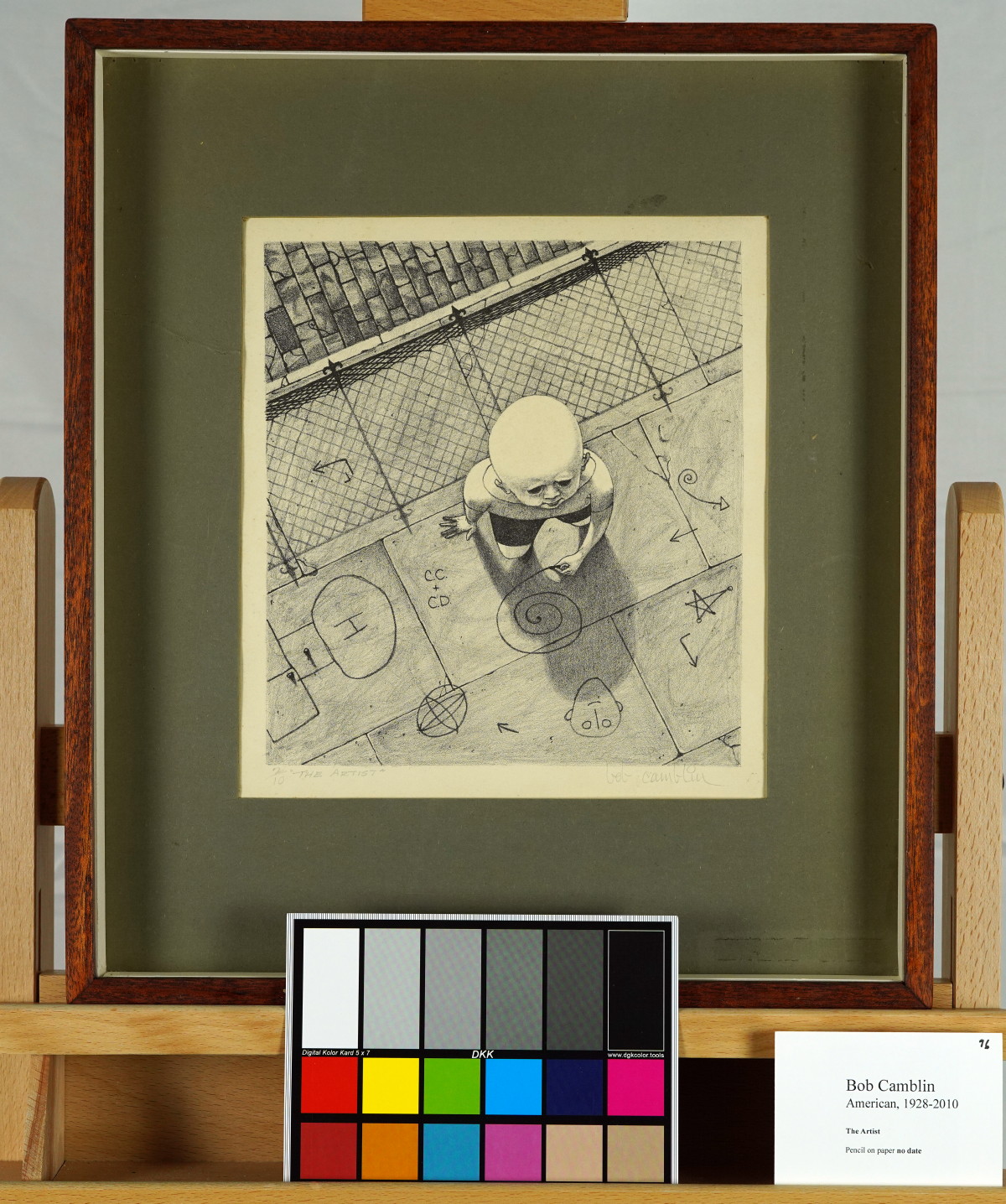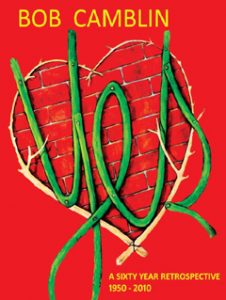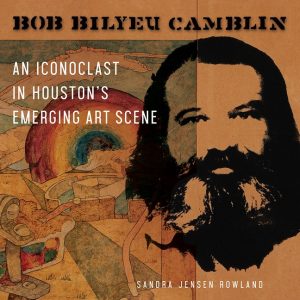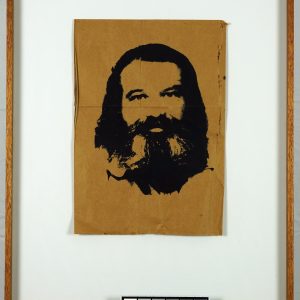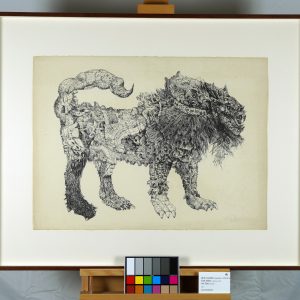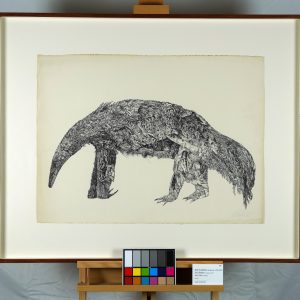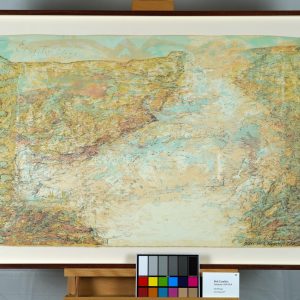Description
The Artist, c. 1940s – 50sLithograph 2/10
Signed
9.5 x 8.5 in. (image)
17.5 x 15.5 x 2 in. (frame)
original, includes certificate of authenticity from ArtTrust
The drawing “The Artist” portrays a childlike figure standing on a tiled surface, looking up. The scene is set from a high vantage point, offering a unique perspective. Surrounding the child are symbols and geometric shapes drawn on the tiles, which evoke a sense of playfulness but also mystery. A fence creates a barrier between the figure and the background, suggesting confinement or separation.
From a Zen perspective, the image can symbolize the innocence and openness of “beginner’s mind,” a concept in Zen where approaching life with a child’s wonder allows for true understanding. The child’s upward gaze may indicate curiosity or yearning, seeking answers or truths beyond the visible world. The drawings on the ground could represent the patterns and distractions of everyday life, while the figure’s central positioning invites stillness and mindfulness in the present moment.
The I Ching, or Book of Changes, can be connected to the idea of transformation and growth depicted in the scene. The child represents potential, symbolizing a time of unformed possibilities. The various symbols could correspond to the different hexagrams, suggesting various life paths, opportunities, or challenges that lie ahead. It can also be viewed as embodying the yin-yang principle, where innocence (yin) interacts with the complexities of life (yang).
Combining the Zen and I Ching perspectives, the artwork speaks to the journey of self-discovery and life’s cyclical nature. It juxtaposes the innocence of childhood with the structured symbols of knowledge and boundaries (represented by the fence). The upward gaze symbolizes aspiration, the fence represents limits, and the ground symbols capture life’s path—a blend of freedom and constraint. This combination suggests that growth and wisdom involve finding harmony between external knowledge and internal intuition.
The piece evokes elements of Surrealism and Symbolism, focusing on the juxtaposition of familiar and uncanny imagery. The unusual perspective, symbolic language, and dream-like quality recall artists such as Paul Klee, who explored childlike wonder in art, or even Giorgio de Chirico’s metaphysical scenes. This artistic choice challenges the viewer to contemplate deeper meanings and look beyond the surface reality, embracing both existential and playful themes.
The artwork effectively melds simplicity with depth, using visual elements to prompt reflection on the nature of understanding and life’s journey.
*Shipping cost will vary, please inquire at sales@camblingallery.com before purchasing.
Currently ships from Oregon, USA
Member of artnet? Apply for a discount! Inquire about intergallery and permanent loans for museums.
“The Artist” was featured in his Yes Retrospective and in Sandra Jensen Rowland’s monograph, Bob Bilyeu Camblin – An Iconoclast in Houston’s Emerging Art Scene.
Reproductions of this drawing are available in multiple sizes!
Click here to use our high-resolution viewer!
This artwork is available with a non-fungible token to ensure traceability and transparency of provenance.
The royalty factor – Unlike traditional artworks, such as paintings, mosaics, statues, and the like, NFTs can be programmed to provide royalties to you every time the painting (and token) is sold and resold – for eternity. That mind-bending Camblin you sold could be worth millions one day and provide income for your great-great-great grandkids!
Anti-forgery – The central idea underpinning NFTs is that they are built on the blockchain, which is meant to offer advanced security. Think of it like an un-erasable and un-avoidable copyright.
Easy authentication – Another compelling aspect of NFT art and NFTs in general is the ability to quickly and easily authenticate items, as the record of ownership is scrupulously kept on the blockchain.
